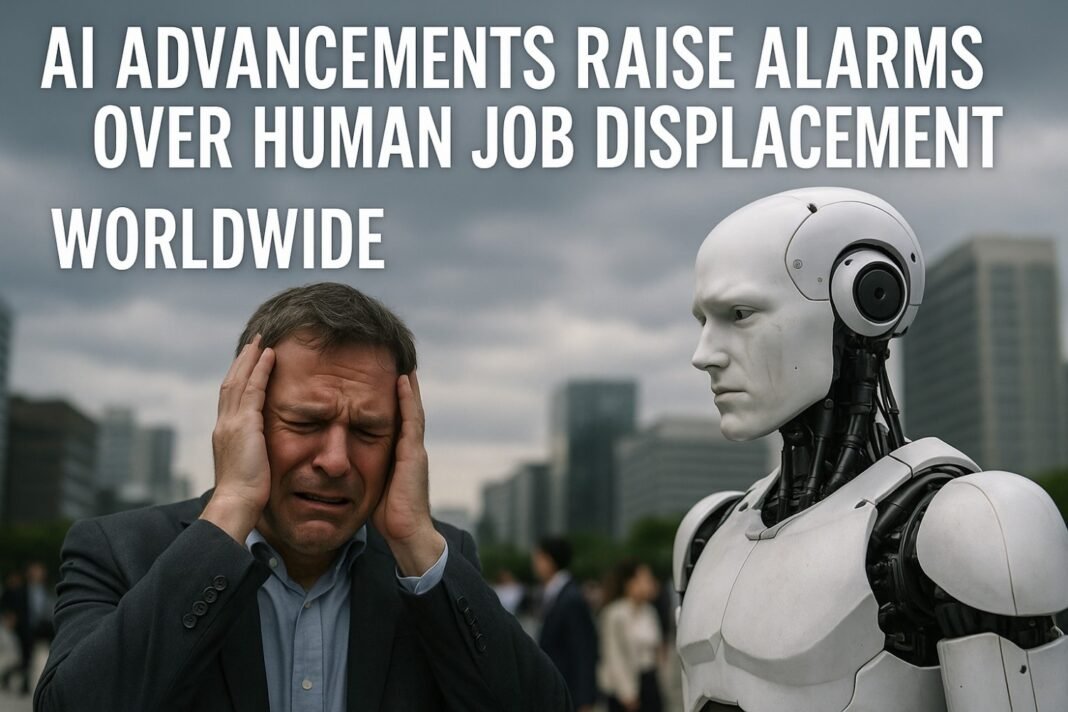Artificial Intelligence: Innovation or Invasion?
Once celebrated as a tool for enhancing productivity and solving complex problems, artificial intelligence is now under growing scrutiny as it begins to replace humans across multiple industries. From the latest fashion campaigns to backend IT operations, AI is moving beyond support roles and directly taking over tasks once done by real people, and the consequences are raising red flags around the world.
A recent Vogue ad featuring an AI-generated model created by the tech-fashion firm Seraphinne Vallora sparked global concern. The synthetic image, labeled subtly in small print, appeared so lifelike that many readers didn’t realize the model wasn’t human. While the creators defended the project as a technological milestone, critics argue it’s a warning sign of a deeper shift: one where machines are replacing not just tasks, but people.
Job Losses Mount as AI Expands Its Reach
The fashion industry is just one example of a growing trend. Across sectors, companies are increasingly turning to AI to streamline operations and reduce costs. From customer service bots to automated financial analysis and AI-generated design, businesses are laying off thousands as they opt for cheaper, faster digital alternatives.
In the IT sector alone, major firms have begun downsizing departments once thought indispensable. Software testing, code generation, cybersecurity monitoring — once human-led functions — are now heavily supported or replaced by intelligent systems. Similar patterns are emerging in journalism, marketing, logistics, healthcare administration, and even education.
What was once a concern for the distant future is now a present reality. AI is not just assisting human workers — it is replacing them. And for many, especially those without the means or training to transition into other roles, it leaves little room to adapt.
The Disappearing Human Touch
Beyond economics, there’s the deeper issue of human value and identity. In fashion, the use of AI models—perfect, polished, and algorithmically optimized—erases the individuality, diversity, and authenticity of real people. Critics argue this doesn’t just rob models of jobs, but also affects how society perceives beauty and self-worth.
The same concerns apply across industries. When AI-generated content becomes the norm—whether in media, design, or customer service—consumers may unknowingly interact with a machine, believing it to be human. The erosion of transparency adds to the psychological burden, especially among younger generations struggling with unrealistic expectations and constant comparison to artificially “perfect” standards.
Mental health experts warn that exposure to AI-generated ideals, whether in fashion or social media, can lead to increased anxiety, depression, and poor body image. Unlike traditional photo editing, AI models aren’t based on real people at all—they are designed to be flawless, making them fundamentally unattainable.
The Case for Global Regulation
As these challenges mount, so do calls for a unified response. Experts argue that AI development and deployment must be subject to global oversight, with clear frameworks that prioritize ethics, accountability, and labor protection.
“We can’t allow unchecked AI to displace human dignity,” says Sara Ziff, founder of the Model Alliance, which advocates for workers’ rights in fashion. “This is less about innovation and more about companies trying to cut corners—at real human cost.”
Many believe that AI should remain a tool for human benefit, not a replacement for human existence. While technology has long shaped industries, the speed and scale of AI’s integration is different—and demands urgent attention.
Countries are beginning to discuss regulatory approaches, but without a global consensus, enforcement remains weak. In the UK, for example, there’s no legal requirement to clearly label AI-generated content. In digital spaces flooded with synthetic media, this lack of transparency is alarming.
A Crossroads for Humanity
We are at a critical junction. The question is no longer whether AI can do the job—but whether it should. What are the societal costs of automation when livelihoods, identity, and mental well-being are at stake?
If left unregulated, AI risks becoming a force that deepens inequality, fuels unemployment, and erodes the very fabric of human connection. Developers, corporations, and governments must act now to define boundaries, protect workers, and ensure that technological progress serves humanity—not the other way around.







